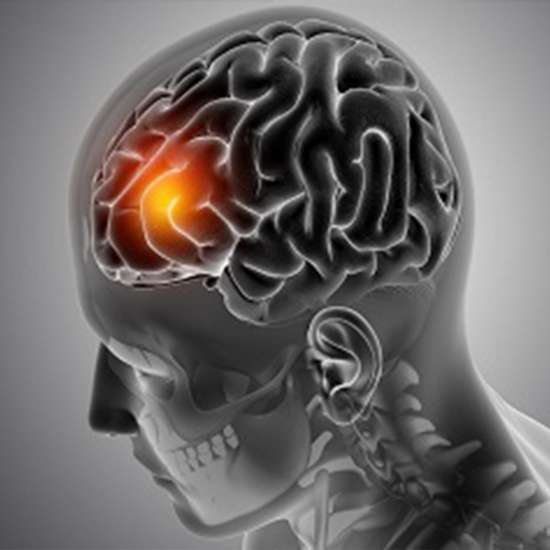
Parkinson's disease and advanced neuroendocrine tumors are especially seen with DOPA PET scans in the area of the brain (NETs). A radioactive tracer for positron emission tomography (PET) that can help visualize the...
Parkinson's disease and advanced neuroendocrine tumors are especially seen with DOPA PET scans in the area of the brain (NETs).
A radioactive tracer for positron emission tomography (PET) that can help visualize the nerve terminals of dopaminergic neurons, Flourodopa F18 (F-Dopa), was recently approved by the FDA. Parkinson's disease (PD) and other parkinsonian syndromes can be diagnosed with its aid. The tracer's brain uptake is diminished in these patients. F-Dopa has long been used for research purposes and is now authorized for usage in clinical settings. The tracer was only utilized for research purposes, thus medical insurance did not cover the treatment. The FDA's clearance of F-Dopa increases the possibility that insurance companies will eventually pay for F-Dopa PET imaging.
Why F DOPA scan is done?
This dementia diagnosis has received FDA approval. This test is also recommended by doctors to check for Alzheimer's alterations. Typically, Parkinson's co-occurs with Alzheimer's
F Dopa VS. SPECT
The application of F-Dopa imaging will be similar to that of DaTscan imaging. The dopamine transporter can be seen using the radioactive tracer DaTscan for single photon emission computed tomography (SPECT), which also marks neurons as F-Dopa does. All parkinsonian disorders, including typical parkinsonism such as Progressive supranuclear palsy and Multiple System Atrophy, result in a decrease in both tracers. Therefore, these imaging techniques can be utilized to distinguish between the parkinsonian condition, which is characterized by dopaminergic neuron degeneration, and other conditions, such as essential tremor, which are not defined by dopaminergic neuron degeneration. When a clinical examination is not sufficient to distinguish between the many clinical possibilities, both DaTscan and F-Dopa imaging can be useful.
How To Prepare For F-DOPA Scan?
-
Before your scan, go without eating or drinking for at least two to four hours.
-
Women who think they could be pregnant should let their doctors know. Pregnancy tests should always be taken before performing a scan if in question. The PET-CT scan is typically not advised if the pregnancy test is positive.
-
It is imperative to pump and conserve breast milk if you are lactating before a PET-CT scan. After 24 hours, it's okay to breastfeed your infant once more.
-
It is advised that you have a family member with you to assist you while the scan is being done.
-
Wear casual attire and stay away from jewelry.
-
Do not exercise or engage in any physically demanding activities within 24 hours of the scan.
-
Medicine for diabetes can be taken up to 24 hours before the surgery.
What is the procedure for F-DOPA Scan?
-
Using a radioactive substance (tracer), a PET-CT scan creates 3D images of the body's organs and regions while they are actively functioning. The alterations that occur are noted in the sequential order as follows:
-
You will be required to communicate all pertinent treatment information, reports, and doctor's prescriptions with a patient care coordinator when the registration procedures are finished.
-
Please bring all your prior scan CDs with you because comparisons will benefit from having them.
-
When discussing your medical history, kindly display your most current serum creatinine and blood sugar results. For a precise diagnosis, it is best to perform both tests on the same day. You can get these done at our pathology lab if you don't already have them. Before the PET-CT scan starts, the reports for the same will be quickly and conveniently accessible.
-
Appropriate clothing and requesting you to take off all of your jewelry.
-
In order to prepare for the radiotracer injection, a cannula is inserted into your vein.
-
For the patients, this helps prevent needless needle sticks. You might be asked to drink some medicinal water, depending on the sort of scan.
-
Through the cannula, the radiotracer is injected into the vein. You would be advised to unwind and rest for an hour in a different room at our facility after the injection. This will facilitate the radiotracer's absorption into your body before the scan.
-
You will be escorted into the scanning room when you are prepared.
-
Before the scan starts, the technician will provide you with all the essential instructions. Please don't be concerned; you are being watched constantly.
-
During the scan, a contrast dye may be administered if the doctor requires more data to make a diagnosis. The amount of serum creatinine determines the contrast material to be utilized.
-
Unless further photos are needed, your scan will just take a few minutes—about 15-20.
-
Sometimes a second delayed scan may be necessary.
-
When the doctor gives the all-clear, you can get dressed, eat something, and take your medications.
After the scan
-
Patients may consume food, liquids, and medications.
-
After the scan, the patient must stay in the clinic for about 30 minutes till the concerned staff can confirm
-
To avoid subjecting them to radiation, it is preferable for the patient to spend the rest of the day away from young children and expectant women.
-
Ten to twelve hours after the scan, the radiotracer leaves the patient's body through urine or faeces. To aid in flushing it out, the patient should drink plenty of water.
Conclusion
A F-Dopa Scan is a highly precise diagnostic scan for brain disorders such as Parkinson's disease and advanced neuroendocrine tumors. If you have been prescribed a F-DOPA Scan then contact us 24×7 and schedule an appointment at our world-class diagnostic centre in Rohini, Delhi.









